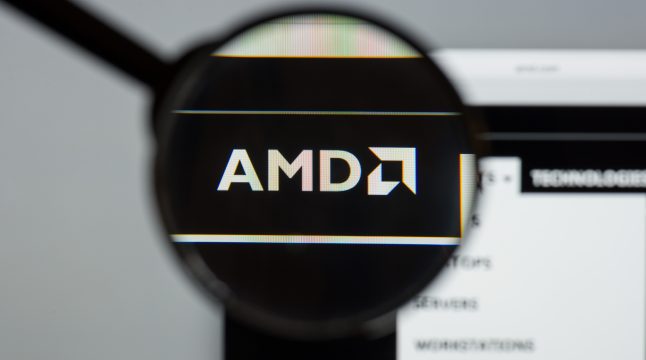
AMD Stock Plunge: 3 Key Factors Driving the Decline
Advanced Micro Devices (NASDAQ: AMD) shares plummeted over 5% on September 5, 2025, following a significant analyst downgrade from Seaport Research. The semiconductor giant, which had been riding high on AI chip momentum with a 34% year-to-date gain, now faces mounting headwinds that threaten its near-term growth prospects. Trading at $152.87, down from a previous close of $161.79, AMD’s stock decline reflects growing concerns about the company’s ability to capitalize on the artificial intelligence boom amid intensifying competition and market challenges.
Factor 1: Weak AI Accelerator Adoption and Customer Conversion Challenges
AMD’s most significant challenge lies in its struggle to convert early AI chip adopters into major buyers. Despite showcasing multiple customers at recent AI events, most have only purchased trial systems for AMD’s MI Series accelerators rather than committing to large-scale deployments. Seaport analyst Jay Goldberg’s supply chain checks revealed that meaningful conversions from trial orders to substantial purchases won’t materialize until future product generations arrive.
The revenue visibility crisis is exacerbated by major customers, including Microsoft (NASDAQ: MSFT) and Meta (NASDAQ: META), which are conducting comprehensive reviews of their AI spending budgets. These budget reassessments by two key potential buyers create uncertainty around near-term chip orders and make it difficult for AMD management to forecast AI division performance in upcoming quarters. The slow adoption rate highlights the competitive disadvantage AMD faces against established players like NVIDIA in the rapidly evolving AI accelerator market.
Supply chain data further suggests that third-quarter AI accelerator shipments may fall short of earlier projections, adding to investor concerns about AMD’s ability to meet growth expectations. This weak momentum in the AI segment is particularly troubling given the high stakes and massive market opportunity in artificial intelligence applications.
Join our Telegram group and never miss a breaking digital asset story.
Factor 2: Intense Competition and Margin Pressure from Discounting Strategies
AMD has increasingly relied on customer discounts and support programs to accelerate AI chip adoption, creating significant pressure on profit margins. The company’s aggressive discounting strategy represents a concerning trade-off between market share gains and profitability, as AMD attempts to compete with industry leaders in the highly competitive AI chip market. These heavy discounting measures, combined with weak demand visibility, could substantially hurt financial performance in the coming quarters.
The competitive landscape has intensified as rivals like Broadcom have publicly stated their intentions to gain market share in AI chips. This environment forces AMD to make difficult choices between maintaining pricing power and securing market position. Analyst concerns about margin compression reflect the challenging balance the company must strike between growth and profitability in an increasingly crowded market.
Goldman Sachs has warned that the broader AI trade could lose steam, adding another layer of complexity to AMD’s competitive positioning. With a high trailing P/E ratio of 91.61, investors are paying a premium for growth that may prove more elusive than initially anticipated.
Factor 3: Export Restrictions and Supply Chain Disruptions
Recent semiconductor export restrictions have created additional headwinds for AMD’s growth prospects, particularly affecting the company’s ability to serve certain international markets. These trade policy changes add complexity to AMD’s global supply chain operations and could limit revenue opportunities in key geographic regions. The export controls primarily target advanced node semiconductors and manufacturing equipment, areas where AMD competes directly.
The supply chain challenges extend beyond regulatory issues to include broader market dynamics affecting semiconductor availability and pricing. AMD’s ability to scale production and meet demand is constrained by these external factors, which could impede the company’s efforts to capitalize on AI market opportunities. Industry-wide supply chain pressures have made it more difficult for AMD to predict delivery timelines and maintain consistent product availability.
These disruptions come at a critical time when AMD needs operational flexibility to compete effectively in the fast-moving AI chip market. The combination of export restrictions and supply chain constraints creates a more complex operating environment that could limit AMD’s ability to execute its growth strategy effectively.
Disclaimer: The author does not hold or have a position in any securities discussed in the article. All stock prices were quoted at the time of writing.




